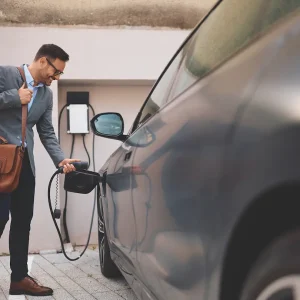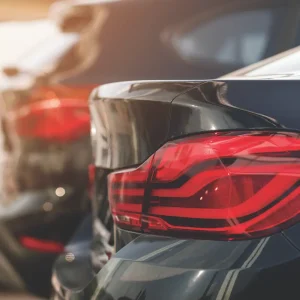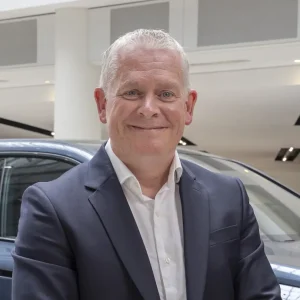Choosing which technology to put in your company car fleet can be a minefield. We’re here to advise you on the best tech to choose on your options list, to keep your drivers happy and make their driving safer, more efficient and less of a chore.
With many technologies that used to be only available on higher-end cars now decreasing in price and being adopted by lower-end manufacturers, we determine which technologies we think are now essential for business drivers.
DAB radio
Remember the days when your radio would go fuzzy and cut out randomly, or do you still have this problem? Analogue radios are gradually being phased out, with broadcasters moving towards digital audio broadcasting, which can provide sharper reception and greater clarity.
Audio can also be streamed wirelessly from your phone to the stereo system using Bluetooth, or 3G or 4G connections, and can be played directly from services such as Spotify and Apple Music.
Parking assist
About as close to autonomy as the law will let us get at the moment is parking assistance technology. Combining the cameras and sensors of the car, parking assist systems are available on many cars now and can judge the size of a parking space, inform you whether or not it is a suitable size, and – with you controlling the speed – steer itself into the parking space. Clever, eh?
Parking assist is now a feature on many cars – and you’ll find it in the higher-trim Ford Focus, Volkswagen Golf and Seat Leon, to name a few.

Lane departure warning and blindspot detection
These two features have been proven to significantly reduce crashes if used. They both do exactly what they say on the tin – the former warning you if you’re straying outside of the white lines and into the path of another vehicle, and the latter detecting whether there is another vehicle in your blindspot that you may have missed. When working in harmony the systems mean you can relax a bit more behind the wheel knowing that you’re less likely to be caught out by any unexpected surprises.
Adaptive cruise control
Gone are the days when having simply cruise control would suffice in your company car. Now, it’s all about the adaptive technology that takes it a step further. Set your desired speed like you would with cruise control, and the car monitors a pre-determined time gap to the vehicle in front. If the car slows or someone cuts in front of you, the car will slow down and brake for you.

Rear parking cameras and parking sensors
If your car isn’t quite up to parking itself, then a technology that is really useful is a rear parking camera. The system gives you a view of what’s going on behind you when you reverse – a really useful technology to have when you drive a lot, suffer from bad natural rear visibility and increased likelihood that the rear view will be blocked by heads, or lots of cargo in your boot or on your back seats.
Also increasingly becoming standard on many cars are parking sensors that provide audible and visual warnings as you get closer to a vehicle or potential hazard. These can often be found fitted at the front and the rear. The warning noise gets louder or more high-pitched as the vehicle gets closer to an object such as another car, a pillar or wall. This gives the driver a clear indication of how close they are, and helps them to avoid small bumps and scrapes.
Autonomous emergency braking
One of the most common accidents is rear-ending which is quite often caused by a lack of driver concentration out on the roads. These accidents are especially common in cities where there is lots of bumper-to-bumper traffic. Autonomous Emergency Braking, also known as AEB systems lessen the risk of these crashes in this scenario and many manufacturers are now adopting these systems in their cars. Ford’s Active City Stop, Volvo’s City Safety system and Nissan’s Forward Emergency Braking are just some of the popular AEB systems now on offer.
Heated windscreen
This may sound like one of those lovely extras you might add for your drivers but a heated windscreen is seriously something they want in a company car, especially living in the UK. The clever feature is designed to get you on the move quickly on frosty mornings and on most cars where it is fitted, all you need to do is touch a button.
Ultra-thin filaments on the windscreen can superheat to de-ice, de-fog and de-mist your windscreen, as well as help de-freeze the wipers in seconds. This technology is even becoming standard on inexpensive cars or available as an option that won’t break the bank.

Sat-nav
Sat-navs have been around in the UK for years and remain one of the most crucial additions to most cars, but still aren’t standard in every car on the market. A good sat-nav will enable you to travel safely and effectively, find you the right route and even allow you to navigate around the traffic.
All new BMWs now come with a built-in sat-nav. They are generally installed in your car as part of the centre console.
If you are feeling hungry or running low on petrol on a journey, the sat-nav can tell you where the nearest restaurants and petrol stations are, as well as other useful things.

Apple CarPlay and/or Android Auto capability
Apple CarPlay or Android Auto capability offers drivers the ability to swap out the complicated and often clunky infotainment systems provided by manufacturers in cheaper cars, for a display that interfaces with your phone and provides all the functionality that it has to offer that is safe while driving. It’s especially great for simple linking to apps such as Spotify so you can enjoy your driving playlists easily and quickly.
Speed-limit monitoring systems
Nobody wants a speeding fine, and driving for many hours increases your chances of getting caught out. While this technology can’t stop you speeding, what it will do is make you aware if you are.
The systems will often flash up the speed limit on the sat-nav screen or dash to make you aware that you are driving at excessive speeds. We regard this as a highly useful piece of kit that could save you penalty points or even your licence.

Hybrid or electric drivetrain
Many fleet managers are still cautious of hybrid or electric drivetrains, and can be sceptical of the cost of upgrading to them for their fleet. But what’s becoming a popular notion is to see past the initial cost of adoption and more towards the long-term cost savings and efficiency benefits that an electric or hybrid powertrain can bring to the fleet. Of course, electric cars come with their challenges, such as charging infrastructure, but as long as that is available, driving an electric or hybrid car is undoubtedly the way forward.
As for plug-in hybrids, these offer the environmental friendliness of an electric car while providing options when you can’t find a charging station and don’t want to wait hours to drive. Just try not to forget to charge it.

Wireless charging
When spending time on the road between jobs, something that may be overlooked but is important is giving your phone a charge boost. Almost all cars now come with USB ports installed but can mean many untidy and annoying leads around the gearbox area. Something that is becoming increasingly adopted by manufacturers is wireless charging. While it’s probably not the be-all and end-all to choosing which car to go for, every little helps when it comes to in-car tech, and wireless charging is a neat and simple solution.





